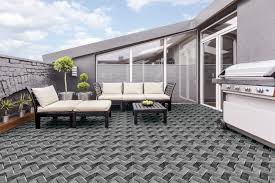3D tiles have become a trendsetter in modern interior design, offering an innovative way to add texture, depth, and visual interest to any space. Unlike traditional flat tiles, 3D tiles boast sculpted surfaces that create captivating shadows and dynamic patterns, instantly transforming a wall or floor into a work of art. Whether used as a statement feature or to subtly enhance a room’s ambiance, 3D tiles bring a unique and contemporary aesthetic to both residential and commercial spaces.
Design and Aesthetic Appeal
What sets 3D tiles apart is their ability to add dimension and character to surfaces. These tiles come in a variety of shapes, patterns, and finishes that allow designers and homeowners to experiment with different textures and styles. Popular designs include waves, geometric forms, hexagons, and organic shapes, each of which interacts with light in different ways to create intriguing effects. The undulating surfaces and raised textures add a tactile element that invites touch, making the space feel more dynamic and engaging.
The beauty of 3D tiles is their versatility in complementing various design styles. For a minimalist, modern look, you might opt for white or neutral-toned 3D tiles with clean, simple patterns. On the other hand, bold colors and intricate designs can enhance more eclectic or industrial-inspired interiors. Whether the goal is subtle elegance or striking drama, 3D tiles can be customized to suit any aesthetic.
Applications in Interior Spaces
One of the most common uses of 3D tiles is on feature walls, where their texture can create a stunning focal point. In living rooms, a 3D-tiled wall behind the TV or sofa adds depth and character, elevating the overall look of the room. In bedrooms, a 3D tile headboard wall can make a bold yet calming statement. Kitchens and bathrooms also benefit from the use of 3D tiles, where they can be used as eye-catching backsplashes, shower walls, or even flooring, adding a sense of luxury and creativity.
For commercial spaces such as hotels, restaurants, and office lobbies, 3D tiles offer an opportunity to impress visitors with a sleek, modern design. Their ability to play with light and shadow makes them an ideal choice for spaces where lighting is an important design element. Whether under natural or artificial light, the textured surface of 3D tiles comes alive, creating a dynamic and ever-changing visual experience.
Material Options and Durability
3D tiles are available in a range of materials, including ceramic, porcelain, stone, glass, and even metal. Each material offers unique benefits. Ceramic and porcelain 3D tiles are widely popular due to their durability, water resistance, and low maintenance, making them ideal for high-traffic areas like bathrooms and kitchens. Stone and marble 3D tiles, on the other hand, lend a sense of elegance and luxury, ideal for high-end residential or commercial spaces.
The durability of 3D tiles ensures they are a long-lasting addition to any home or business. Their high resistance to moisture, heat, and wear makes them perfect for areas that require both beauty and practicality. Many 3D tiles are also easy to clean, ensuring that they maintain their texture and color for years to come with minimal effort.
Transforming Spaces with Depth and Movement
The unique sculptural effect of 3D tiles transforms a flat, lifeless wall or floor into a dynamic and interactive surface. These tiles are ideal for spaces that lack architectural interest or need a feature that adds sophistication and dimension. Whether you are seeking to create a calm, undulating wave effect or a bold geometric pattern, 3D tiles offer endless possibilities for creative expression.
Ultimately, 3D tiles are more than just a design trend—they are a timeless choice that adds movement, texture, and depth to any space, allowing homeowners and designers to create visually stunning environments that inspire and captivate.






Leave a comment
Your email address will not be published. Required fields are marked *